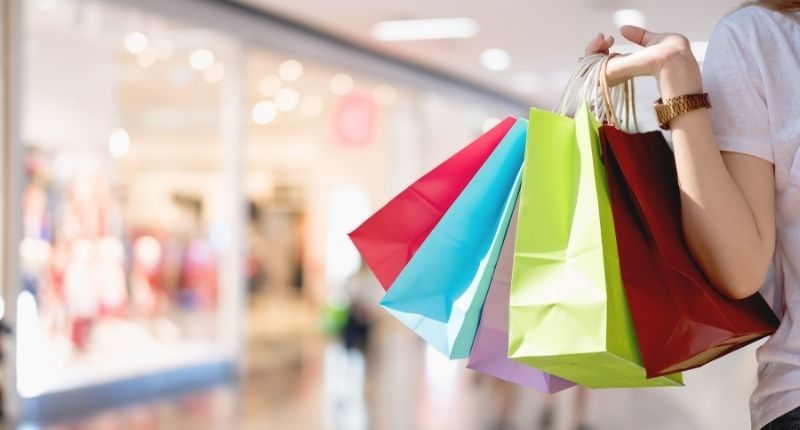- Consumer futurist Stella Gianotto has some advice for retailers
- Consumer spending is on the rise, not falling
- Physical shops have to reinvent the experience, and work with online
Retail was already undergoing dramatic changes well before the pandemic hit.
What some commentators are pondering now is: what does the future hold for retail once we can – and are – venturing out again? Can retail learn from the past year?
Many traditional retailers reported poor Christmas periods, with December 2019 data showing spending 12.2% lower than the year before.
Perhaps 2020 is a year that can shock retailers into action.
Clicks and mortar
Consumers have not stopped spending, they have simply changed how they spend, according to consumer futurist Stella Gianotto.
“They are actually spending more than ever,” she said. “Online shopping jumped 75.8% year-on-year in September, according to Australia Post, who has been busier than ever.”
E-commerce now accounts for 10% of every shopping dollar, according to the Australian Bureau of Statistics (ABS).
Christmas 2020 broke all online shopping records, as expected.
AusPost reported than more than a million new households shopped online between March and September 2020, the main months of the pandemic and subsequent lockdowns.

Once people started shopping online, it quickly became a habit: 33% of Australians say they’ll now shop online more than before.
“Bricks-and-mortar businesses that want to pull in consumers can’t just use the outdated tactic of piling product high and selling it cheap – because that’s a certain death spiral,” said Ms Gianotto.
“Instead, they need to give shoppers a compelling reason to visit their store, stay longer and spend money.”
How?
By completely rethinking their approach, is the answer.
“Traditional retailers need to stop selling products and start selling experiences. When consumers have bad experiences, they vote with their wallets: Adyen found 72% of consumers won’t return to a retailer if they’ve had a bad experience, either in-store or online.
“Traditional retailers can’t compete with online rivals for price and convenience, but they have an ace up their sleeve: face-to-face service.
“Businesses that provide great service create genuine emotional connections with customers. Emotionally connected customers have double the lifetime value of highly satisfied ones, according to ‘The New Science of Customer Emotions’, a research piece reported by the Harvard Business Review.”

The good news is that consumers will pay more for ‘experiences’ than mere products.
“Emotionally connected customers will go out of their way to recommend a business to their friends and family. In this scenario, staff aren’t just staff – they’re customer relationship managers. And customers aren’t just customers – they’re unpaid brand ambassadors.
“You don’t build emotional connections with low prices or slick marketing campaigns. Instead, retailers need to know what customers want before the customers know themselves.
“Customers need to walk into the store and feel everything in it was put there just for them. Surprisingly, this doesn’t just mean crunching data. It can be more simple than that.”
Back in the ‘old days’, Ms Gianotto argues, business owners were always out on the floor.
“They learned everything about their customers by observing and talking to them. What they wanted. How they shopped. How they behaved. And then the owners gave their customers a personalised experience by curating an environment and stocking it with merchandise that matched.”
That’s how your whole shopping experience should behave now, and tools to allow this to happen are readily available.
While people can jump online and buy anything, shops can be “sensory and playful… luxurious and exclusive … learning and workshop centres and community hubs,” said Ms Gianotto.
Brands like Apple, Nike, Rebel and Louis Vuitton have already started doing this. They have made their retail spaces places to visit, to be seen, to build a community and – importantly – where customer relationships are nurtured.
Go to an Apple store. The products are out on various counters. Shoppers are encouraged to pick them up, to play with them. Countless assistants are buzzing around trying to help you. Now go to your local hardware store and try to find someone to assist you.

“Nike ID lets you customise and ‘build’ your shoes online after you’ve been in-store to try one on. Rebel gives you full-size basketball courts, running tracks and try-out hubs,” said Ms Gianotto.
“Louis Vuitton, naturally, goes even further. Its flagship Sydney store offers a ‘Maison’ experience for its highest-spending clients, so they can shop in absolute luxury and privacy.”
Clicks and mortar, working together.
Adaptability
Perhaps Charles Darwin said it best: “It is not the strongest of the species that survives … It’s the one that’s most adaptable to change.”
Australian retailers need to take these words to heart and up their game in the post-pandemic era.








